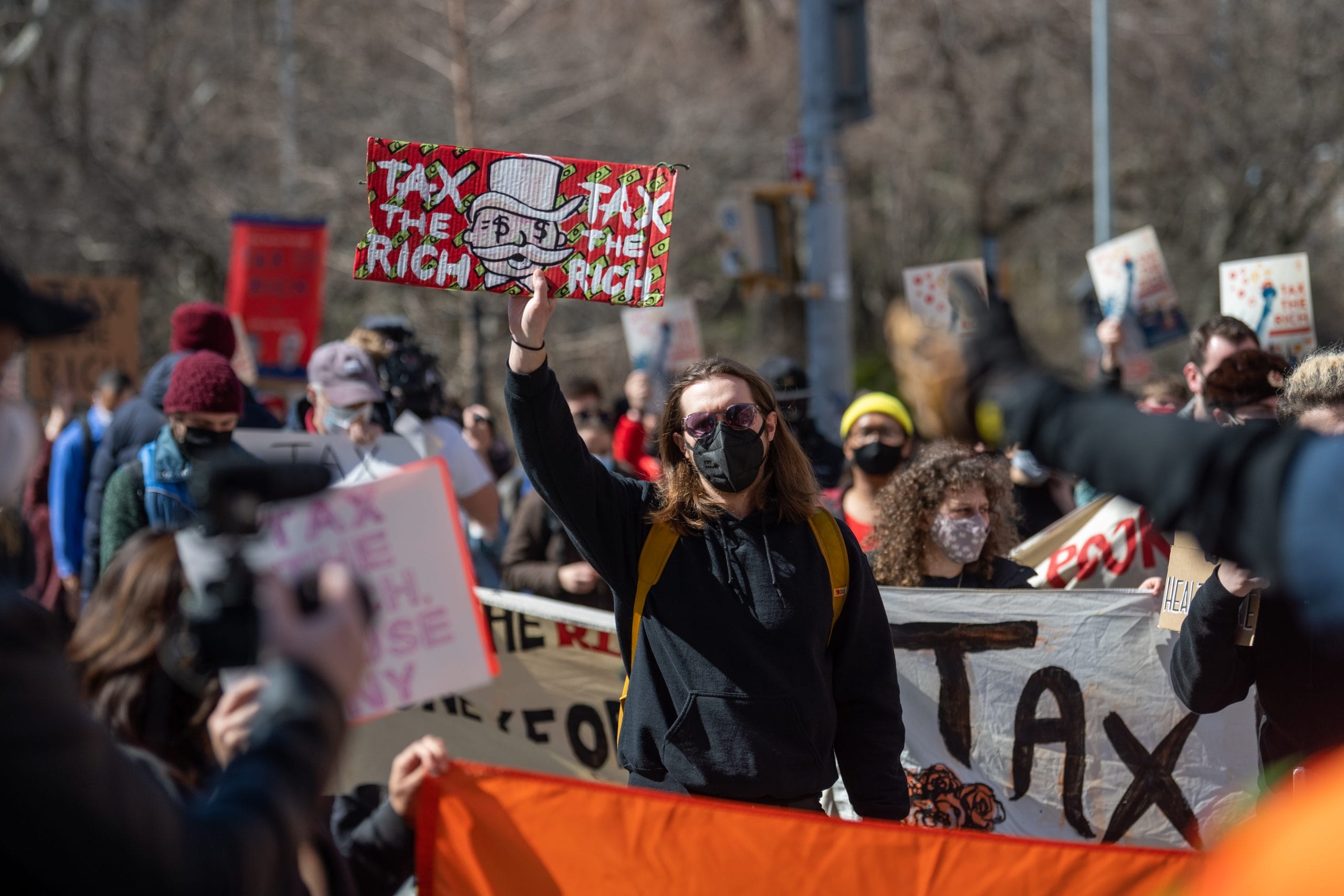Our Tax History Holds the Key to a Fairer System
Our Tax History Holds the Key to a Fairer System Inequality.org


Tax Day 2024: The Need for Fairer Tax System

Tax Day 2024 finds the highest-income individuals, most profitable corporations, richest families, and wealthiest investors all paying lower tax rates than they paid last century.
A steady reduction over the past 50 years in the tax obligations of those best able to pay has worsened economic inequality, harmed public services, and driven up public debt. Creating a fairer tax system in the future begins by looking to the fairer tax system of the past. These are some of the findings of a new report released on Tax Day, April 15, by Americans for Tax Fairness.
Impact on Sustainable Development Goals (SDGs)
- SDG 1: No Poverty – The reduction in tax obligations for the highest-income individuals has contributed to worsening economic inequality, hindering progress towards eradicating poverty.
- SDG 10: Reduced Inequalities – The unequal tax system has exacerbated wealth disparities, making it harder to achieve the goal of reducing inequalities.
- SDG 16: Peace, Justice, and Strong Institutions – A fairer tax system is crucial for promoting justice and strong institutions, as it ensures that everyone pays their fair share and supports public services.
- SDG 17: Partnerships for the Goals – Collaboration between governments, corporations, and individuals is needed to address the issue of unfair tax rates and work towards achieving the SDGs.
Historical Tax Rates
- After World War II (1945-80), individuals with incomes over $1 million paid an average tax rate between 40-60 percent. However, in recent years, this rate has decreased to only about 26 percent.
- In the 1950s, ’60s, and ’70s, the average corporate tax rate was around 35 percent. In contrast, the average corporate tax rate in 2021 was less than 10 percent.
- Corporate dividends used to be taxed at the same rate as wages until the early part of this century when the rate was nearly halved.
Challenges with Estate Tax
- The estate tax has become ineffective in curbing family economic dynasties. Previously, families had to pay taxes on income passed down to the next generation. However, currently, they can transfer $27 million (and increasing each year) tax-free, along with sheltering billions more in special trusts.
SDGs, Targets, and Indicators
-
SDG 10: Reduced Inequalities
- Target 10.1: By 2030, progressively achieve and sustain income growth of the bottom 40 percent of the population at a rate higher than the national average.
- Indicator 10.1.1: Growth rates of household expenditure or income per capita among the bottom 40 percent of the population and the total population.
The article highlights the worsening economic inequality caused by the reduction in tax obligations for high-income individuals and corporations. This connects to SDG 10, which aims to reduce inequalities within and among countries. The specific target under SDG 10 that can be identified is Target 10.1, which focuses on achieving and sustaining income growth for the bottom 40 percent of the population. The indicator that can be used to measure progress towards this target is Indicator 10.1.1, which measures the growth rates of household expenditure or income per capita among the bottom 40 percent of the population and the total population.
-
SDG 16: Peace, Justice, and Strong Institutions
- Target 16.5: Substantially reduce corruption and bribery in all their forms.
- Indicator 16.5.1: Proportion of persons who had at least one contact with a public official and who paid a bribe to a public official, or were asked for a bribe by those public officials, during the previous 12 months.
The article mentions the reduction in tax obligations for high-income individuals and corporations, which can be seen as a form of corruption or unfair practices. This connects to SDG 16, which aims to promote peaceful and inclusive societies for sustainable development, provide access to justice for all, and build effective, accountable, and inclusive institutions at all levels. The specific target under SDG 16 that can be identified is Target 16.5, which focuses on reducing corruption and bribery. The indicator that can be used to measure progress towards this target is Indicator 16.5.1, which measures the proportion of persons who had at least one contact with a public official and who paid or were asked for a bribe.
| SDGs | Targets | Indicators |
|---|---|---|
| SDG 10: Reduced Inequalities | Target 10.1: By 2030, progressively achieve and sustain income growth of the bottom 40 percent of the population at a rate higher than the national average. | Indicator 10.1.1: Growth rates of household expenditure or income per capita among the bottom 40 percent of the population and the total population. |
| SDG 16: Peace, Justice, and Strong Institutions | Target 16.5: Substantially reduce corruption and bribery in all their forms. | Indicator 16.5.1: Proportion of persons who had at least one contact with a public official and who paid a bribe to a public official, or were asked for a bribe by those public officials, during the previous 12 months. |
Behold! This splendid article springs forth from the wellspring of knowledge, shaped by a wondrous proprietary AI technology that delved into a vast ocean of data, illuminating the path towards the Sustainable Development Goals. Remember that all rights are reserved by SDG Investors LLC, empowering us to champion progress together.
Source: inequality.org

Join us, as fellow seekers of change, on a transformative journey at https://sdgtalks.ai/welcome, where you can become a member and actively contribute to shaping a brighter future.







